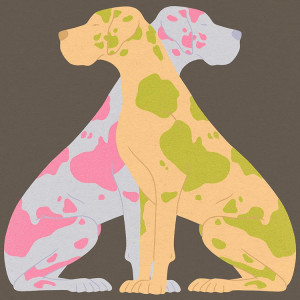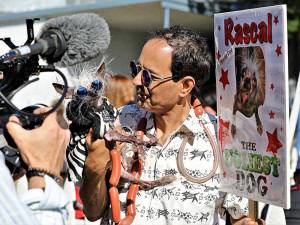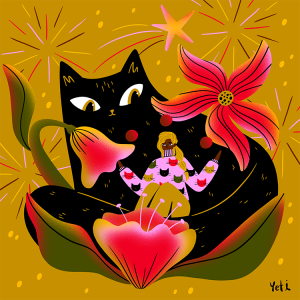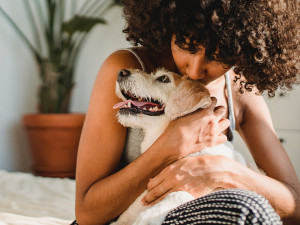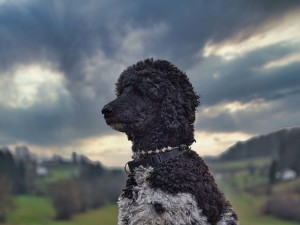These Dogs Play a Very Special Role on the Day of the Dead
How the spirited Xoloitzcuintli breed shines on Día de los Muertos.
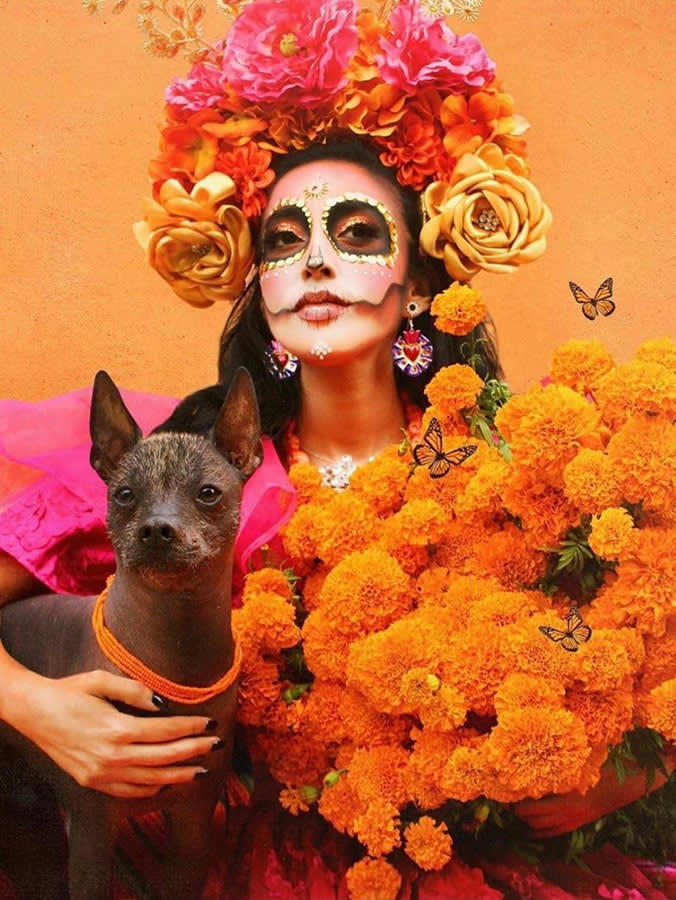
share article

Your pet wants you to read our newsletter. (Then give them a treat.)
Each year on the first two days of November, the Mexican people and their diaspora celebrate the colorful Día de los Muertos, or Day of the Dead. It’s a time devoted to honoring the spirits of departed family members through altars, food, and other offerings — as the deceased make their four-year-long journeyopens in a new tab through nine arduous levels in Mictlán (or, the Aztec’s underworld) towards a final resting place.
In previous generations, Xoloitzcuintliopens in a new tab, also referred to as Mexican Hairless Dogs, were often also central to Día de los Muertos narratives. (In case you’re curious, Xoloitzcuintli is pronounced “show-low-eats-QUEENT-lee,” according to theAmerican Kennel Clubopens in a new tab.) Xolos, as they’re more casually known, are thought to guard humans both in their mortal existence and in the afterlife, which is why they were often buried next to their humans and likewise celebrated during Día de los Muertos festivities.
According to beliefs, an Aztec god named Xolotl specifically created this dog from the same bone of lifeopens in a new tab as their humans, to guide the latter’s souls through the perilous Mictlán. Among the Xolo’s key responsibilities: helping pet parents cross the impossible Apanohuacalhuia River. Here, Xolos would waitopens in a new tab at the shore in anticipation of their arrival.
In some cases, the dogs were sadly sacrificed to join their humans in burial. (Archeologists havespottedopens in a new tab their bones in Mayan tombs.) But in other cases, archaeologists have found ceramic versions of the dogs symbolically buried with people, to similarly usher them through the afterlife. During Día de los Muertos, it isn’t uncommon to see family members create an altar (or ofrenda) that includes photos, candles, toys, and treats to honor a fallen pet.
But their appeal on this mortal coil has been well documented, too. Because they are typically hairless (save a turf of hair atop their heads), Xolos radiated so much warmth that Aztecs believedopens in a new tab they possessed the ability to heal. So humans — believing the dogs can cure asthma, toothaches, insomnia, and rheumatism — tended to keep them close like living, breathing hot-water bottles. (And really, who doesn’t want to snuggle with their pup?)
The name Xoloitzcuintli is amixopens in a new tab of words: “Xolotl,” a reference to the aforementioned god of lightning and death, and “itzcuintli,” the Aztec word for dog. In the Nahuatl language, it’s purportedopens in a new tab that “Xolo” means “monster — areferenceopens in a new tab to the dogs’ darker appearances. At one point in history, they were mistakenopens in a new tab for Chupacabras. So it’s no surprise that Reader’s Digest onceanointedopens in a new tab Xolos the world’s ugliest dog. Many, however, would passionately disagree with that assessment.
In modern times, Xolo enthusiasts have showered much love on the breed. They are adorably slim dogs, which canvaryopens in a new tab in height from 10 inches to 23 inches, with a life expectancy of 13-18 years. Artist Frida Kahlo included her Xolos, namely herfavoriteopens in a new tab pup Señor Xototl, in her paintings. She also posed next to her Xolos in artwork drawn by her husband, the muralist Diego Rivera. (The latter even opened the first Xolo breeding kennel in 1925.) Decades later, Xolo fans demonstratedrenewed interestopens in a new tab in the breed via the Xolo Expedition of 1954, during which they found just 10 remaining Xolos across Mexico and kicked off a campaign to propagate them.
More recently, Pixar’s 2017 film Coco, featured an adorable Xolo named Dante who never left the side of his human, Miguel, as he traversed the world of the undead. (These days, some dog lovers evenparticipateopens in a new tab in Día de los Muertos events with their Xolos in tow, painting them and dressing them in Aztec garb.) Meanwhile, Tijuana went so far as to name asoccer clubopens in a new tab after the dog. They’ve become such a status-symbol in the country that, by 2017, purebredswent foropens in a new tab up to $5,000 in Mexico City. To that end, they are recognized by the American Kennel Club and nowappearopens in a new tab in the coveted Westminster Kennel Club Dog Show.
Trends aside, Xolos are legitimately quite extraordinary. As a breed, they date back 3,000 yearsopens in a new tab, withone archeological digopens in a new tab seemingly backing up the idea that they existed 5,500 years ago. (A different studyopens in a new tab purports that the breed hasn’t changed all that much over the centuries.) Even Christopher Columbus commented on the Aztec’s love of this breed. Unfortunately, as we’ve seen in numerous cultures, Xolo’s became a food source to Spanish conquistadors, which led to theirdiminishing populationopens in a new tab.
Today, the Xolo has been Mexico’s national dog, and in 2020 was named a symbol of Mexico City. Recent reports estimateopens in a new tab that there are less than 30,000 Xolos across the globe, making them just as exceptional to their owners as they were at the dawn of the 20th century. “You really have to be thinking [with Xolos] all the time,” Kay Lawson, a Xolo breeder and former president of the Xoloitzcuintli Club of America,toldopens in a new tab National Geographic. “They open doors, they open crates. This is a primitive dog. They’re extremely intelligent.”

Nisha Gopalan
Nisha Gopalan has been a writer/editor for The New York Times, New York magazine, Entertainment Weekly, Variety, The Hollywood Reporter, and NYLON magazines. She currently resides in Los Angeles.
Related articles
![A dog running with a woman on a pier.]() opens in a new tab
opens in a new tab8 Questions to Ask Yourself When Choosing a Dog Breed
Find out which dog breed is right for your lifestyle.
![A woman sitting on a bed holding a dog close in her arms.]() opens in a new tab
opens in a new tabHumans + Dogs: The Longest Love Story
How we became human — an ongoing exploration.
![Dog Looking Away Against Sky]() opens in a new tab
opens in a new tabDo Hypoallergenic Dogs Really Exist?
Veterinarian Dr. Shea Cox separates fact from fiction when it comes to low-shedding breeds.
![Woman with large dog wearing a Bundle x Joy dog bandana and leash.]() opens in a new tab
opens in a new tabLatinx-Owned Pet Brands You Can Support Beyond Hispanic Heritage Month
Hispanic Heritage Month should be celebrated all year with these toys and treats from these businesses.
![illustration of moises zamora and cats]() opens in a new tab
opens in a new tabMoisés Zamora Has a League of Superhero Cats at Home
The award-winning writer-producer-filmmaker’s superpower is rescuing cats — and letting them inspire the virtual worlds he creates.
